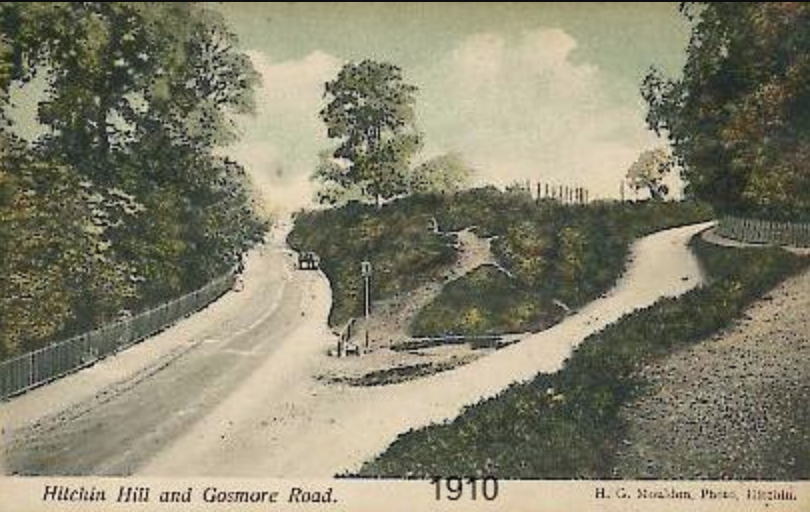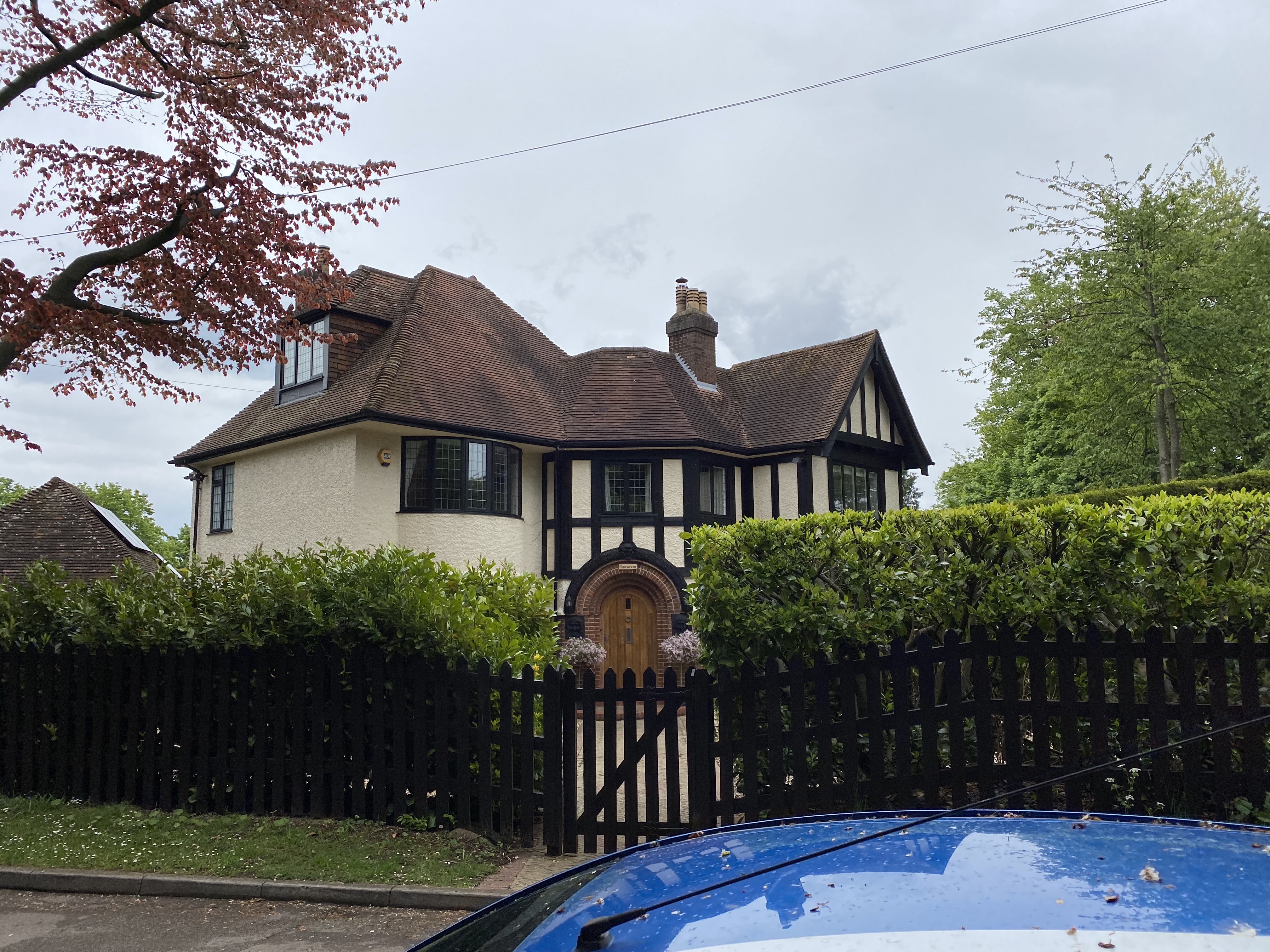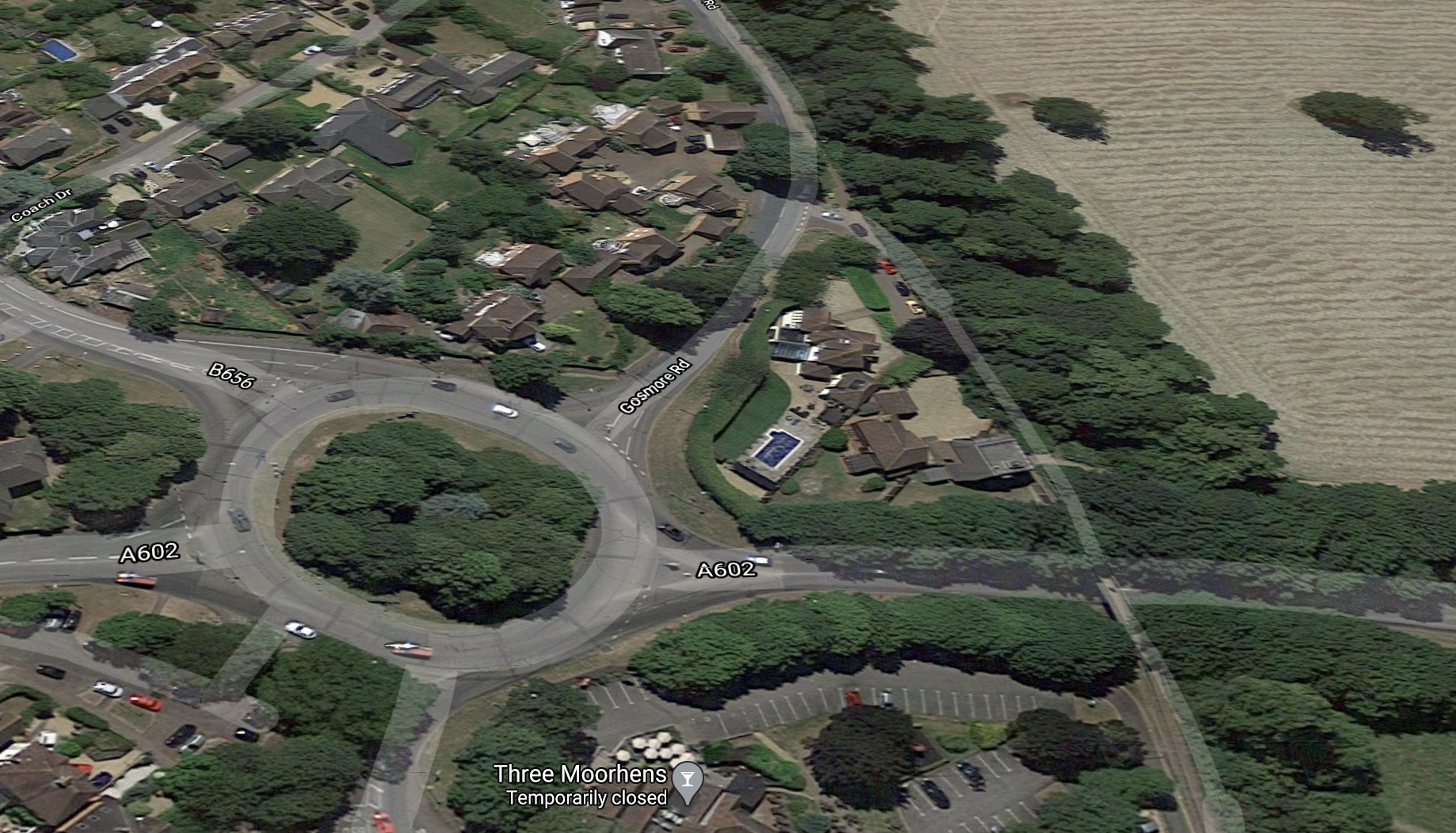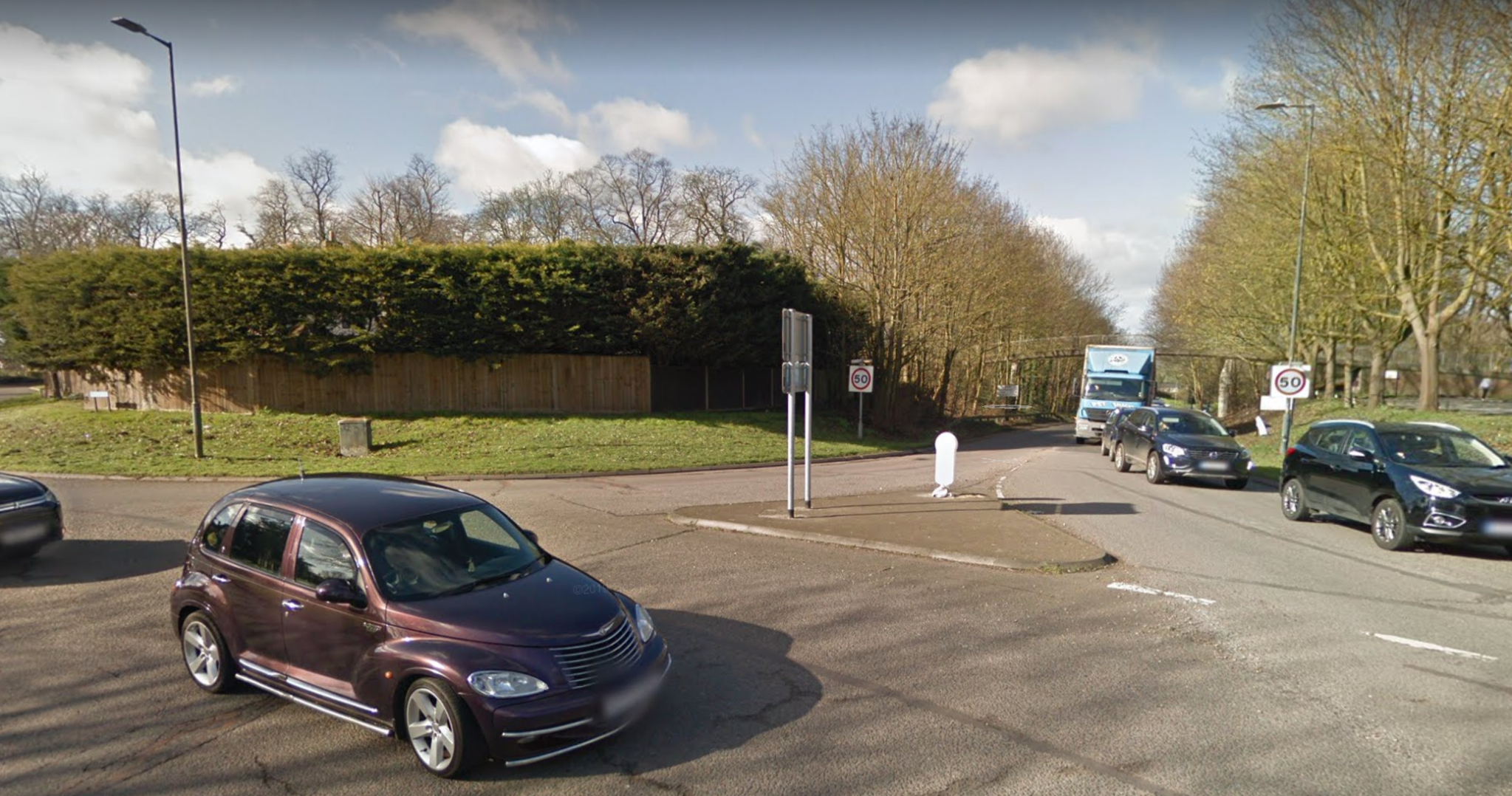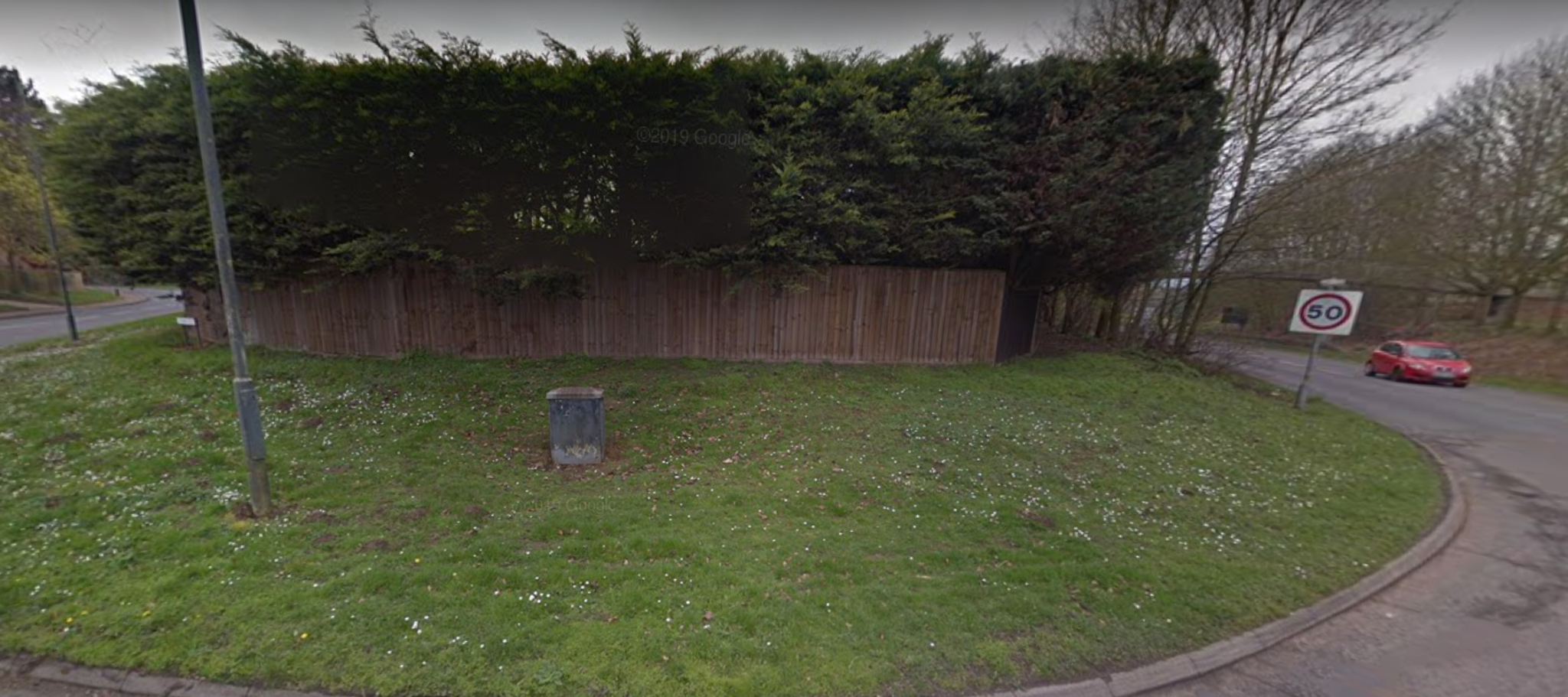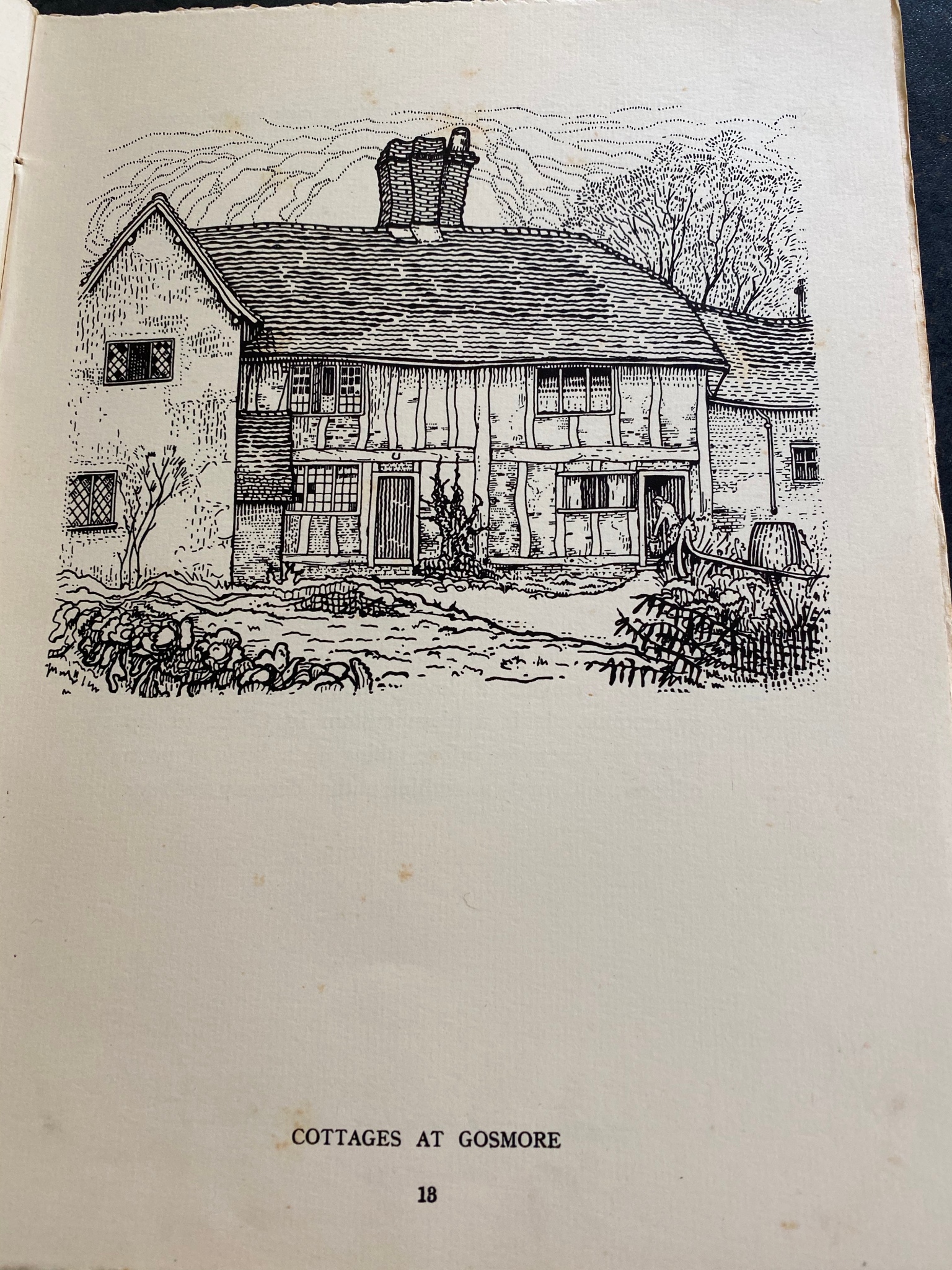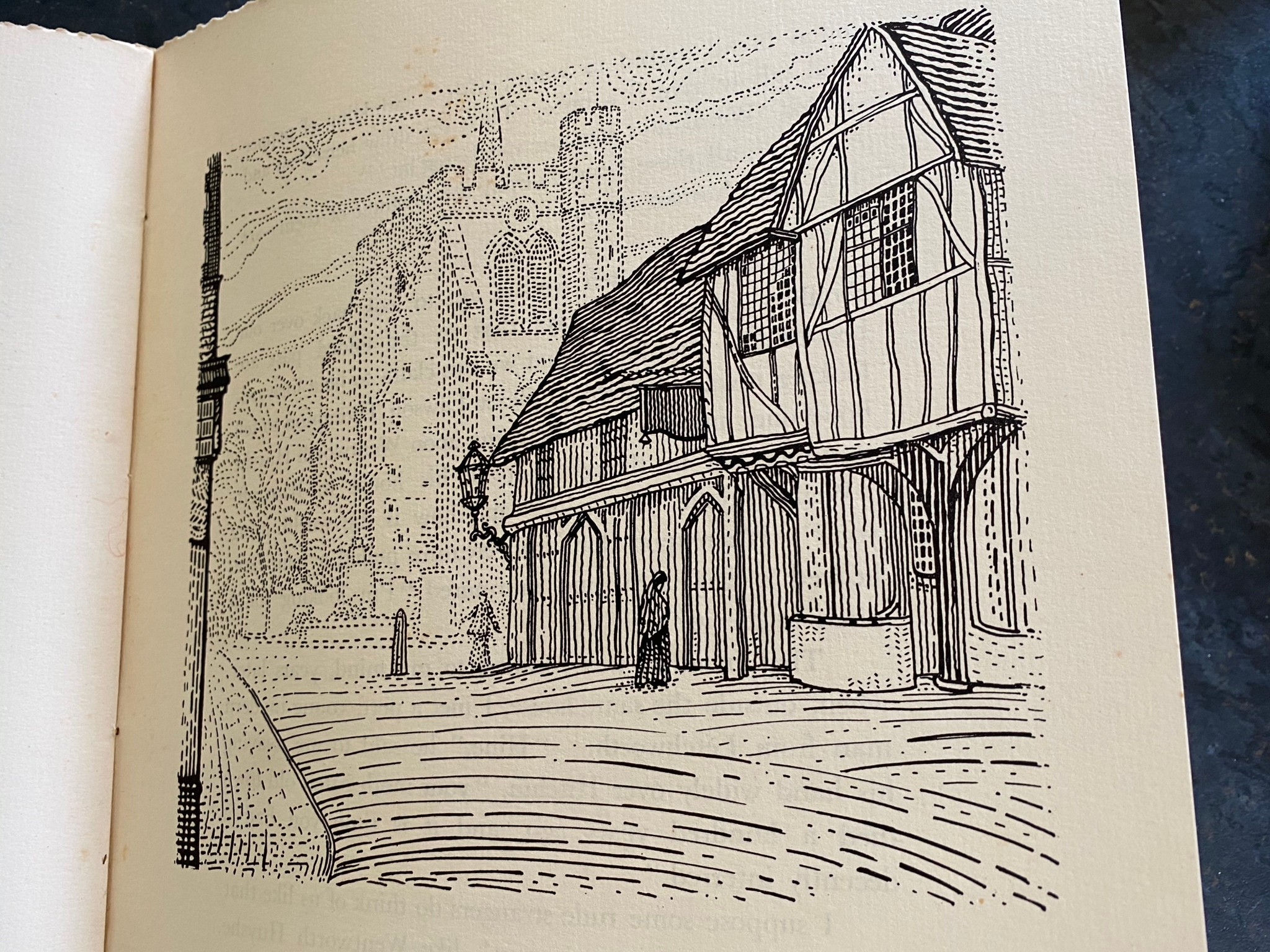In previous posts on this site I’ve noted that Gerard Ceunis’ output as a visual artist, particularly in later years, is dominated by scenes of his adopted town of Hitchin. I’ve paid less attention to Ceunis’ own impact on the visual landscape of the town.
In the very first post on this blog, I wrote about Maison Gerard, his clothing shop in Hitchin marketplace, which is now the local branch of Starbucks, and the striking monochrome timbered pattern on its frontage. At the time, it didn’t occur to me that Ceunis might himself have been responsible for that design, which remains such a distinctive feature of the Hitchin townscape. However, a register of listed buildings in the town, which describes 6-7 Market Place as ‘linked early nineteenth century buildings, possibly containing still earlier structures’, claims that the ‘mock timber framing’ was added ‘c. 1920s’. I haven’t established exactly when Gerard and Alice Ceunis opened their Hitchin shop, but it seems likely it was some time in the 1920s or early 1930s, meaning that they were probably responsible for the distinctive design of its frontage. The only differences between the appearance of the building then and now are that the pale horizontal strip at the top that once bore the legend ‘Gerard’s’ is now blank, and the lower strip, which one featured the name ‘Maison Gerard’, also on a pale background, has been replaced by ‘Starbucks Coffee’ in the brand’s familiar white and green colours.
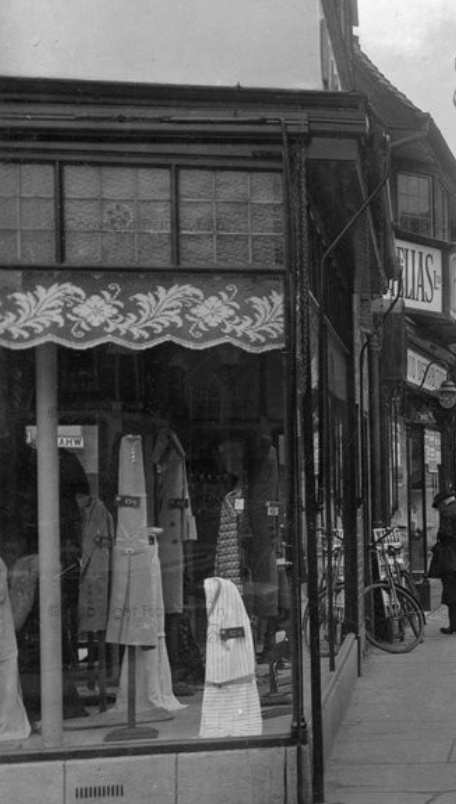
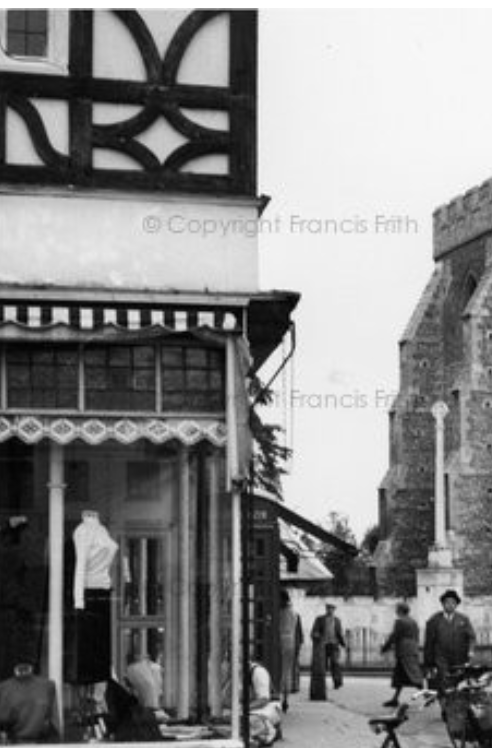
I’ve recently come across more old photographs of the building, or at least a part of it, that show something of what it was like when it was Ceunis’ shop. In these pictures (above), the first from 1929 and the second from 1955, we catch a glimpse of women’s clothing on display in the shop window, but also distinctive patterns on the awning outside the shop, which, together with the unusual frontage, betray the fact that its owner was a visual artist as well as a shopkeeper.
These photographs also reveal that the space immediately above the display window and below the awning was taken up by a row of square frosted glass panels, each divided into nine smaller squares, with a floral design in the middle square. I assume that these were also installed by Ceunis. These glass panels survive to this day, as can be seen in this recent photograph of the building from Google Maps Street View:

I’m not sure whether one would describe the patterns on these panels, or these awnings, or on the front of the building, as influenced by Art Nouveau or Art Deco. However, there is a distinct ‘Nouveau’ feel about another architectural feature, elsewhere in the town, for which I’ve discovered that Gerard Ceunis was responsible. Bridge Street, not far from the market place, is a road full of historic buildings, named after a bridge of the River Hiz that runs through the town. The road runs past Hitchin Priory and turns into Tilehouse Street, where one can see a blue plaque marking the birthplace of George Chapman, the contemporary of Shakespeare and translator of Homer. Before the opening of the Parkway bypass, this was the main road through the town in the direction of Luton.
A corner building at 9 Bridge Street, close to the bridge itself, is now occupied by a furniture shop, but apparently was once a café. According to the book Hitchin Through Time, ‘the carvings adorning the doorway…were added by Belgian First World War refugee Gerard Ceunis, proprietor of Maison Gerard in the Market Place, in 1935’. A proper close-up photograph of Ceunis’ carvings will have to wait until after the current lockdown is over, but in the meantime here are some images taken from Google Maps Street View: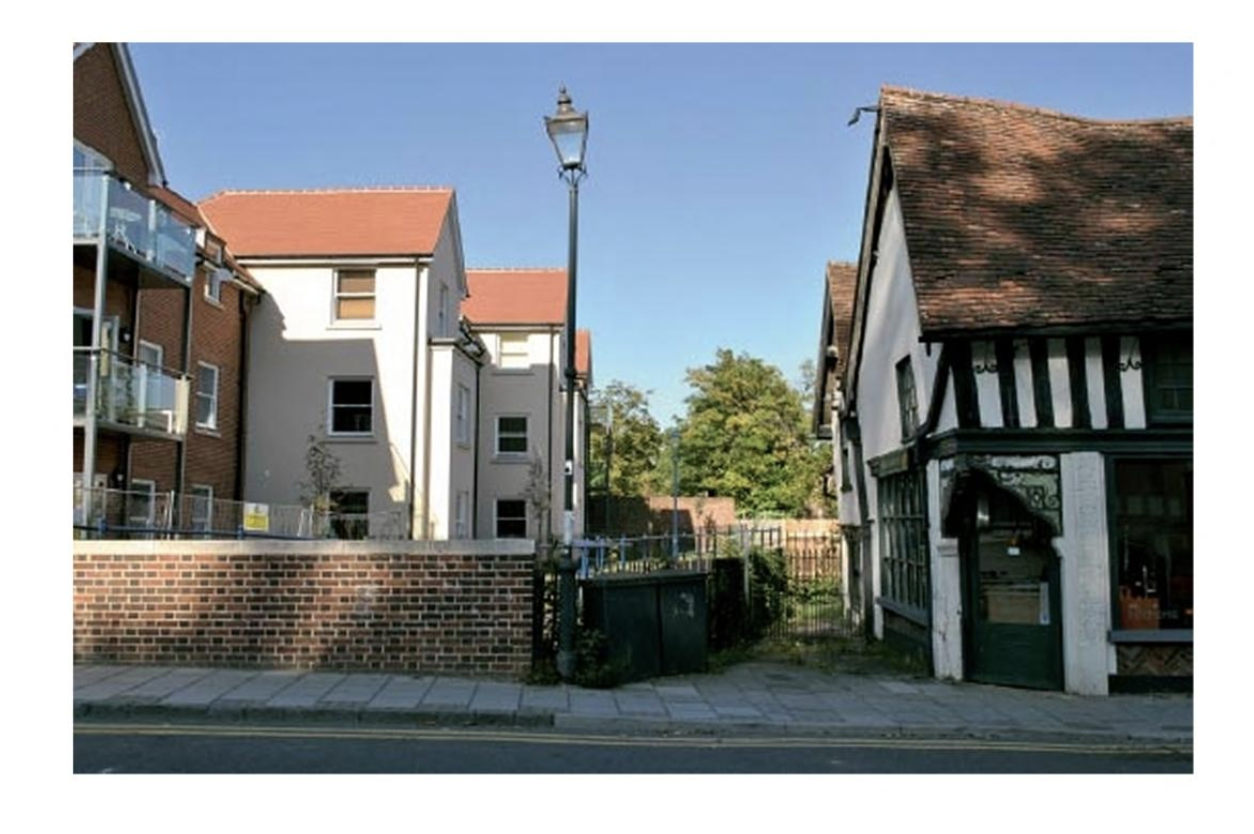
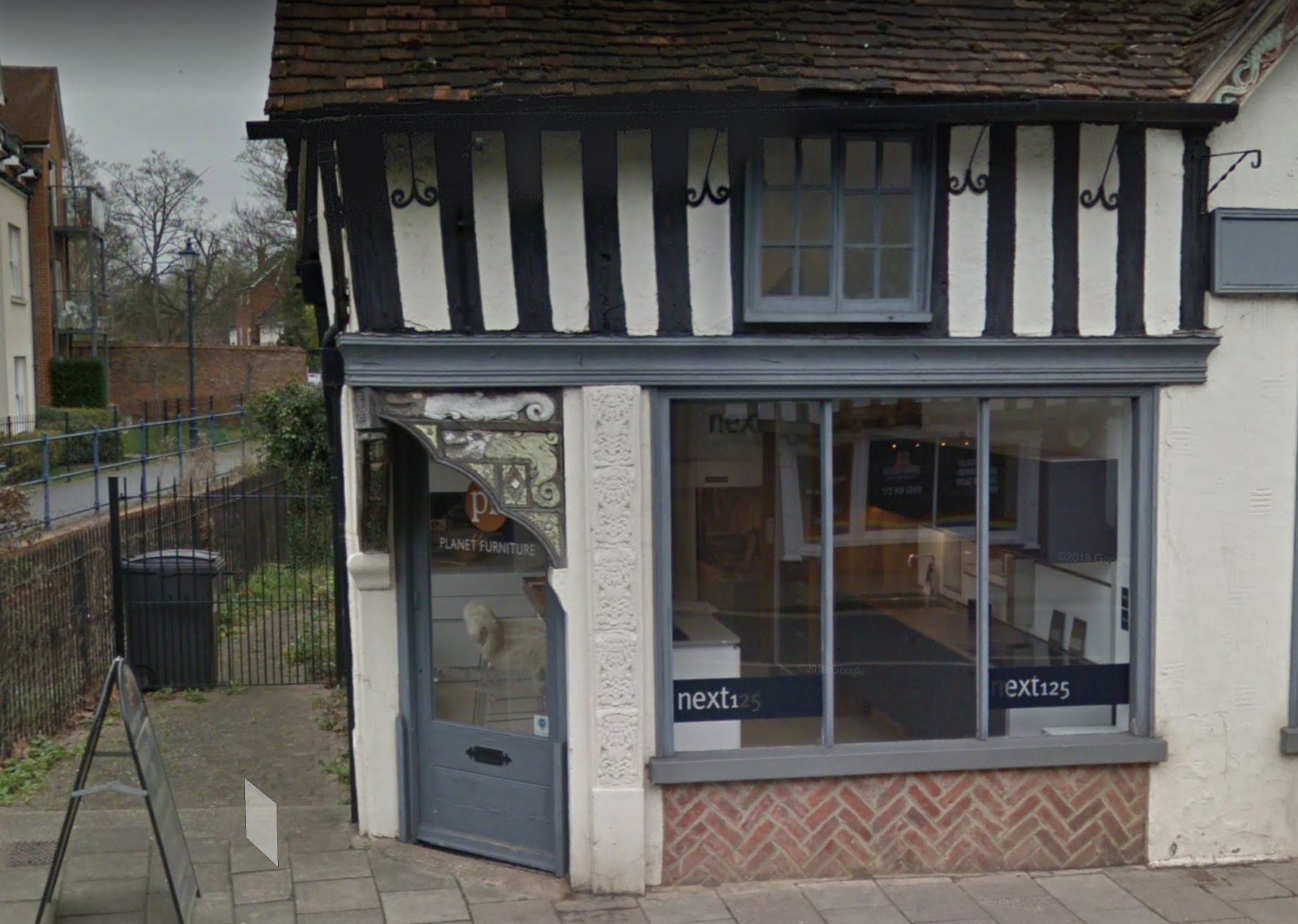
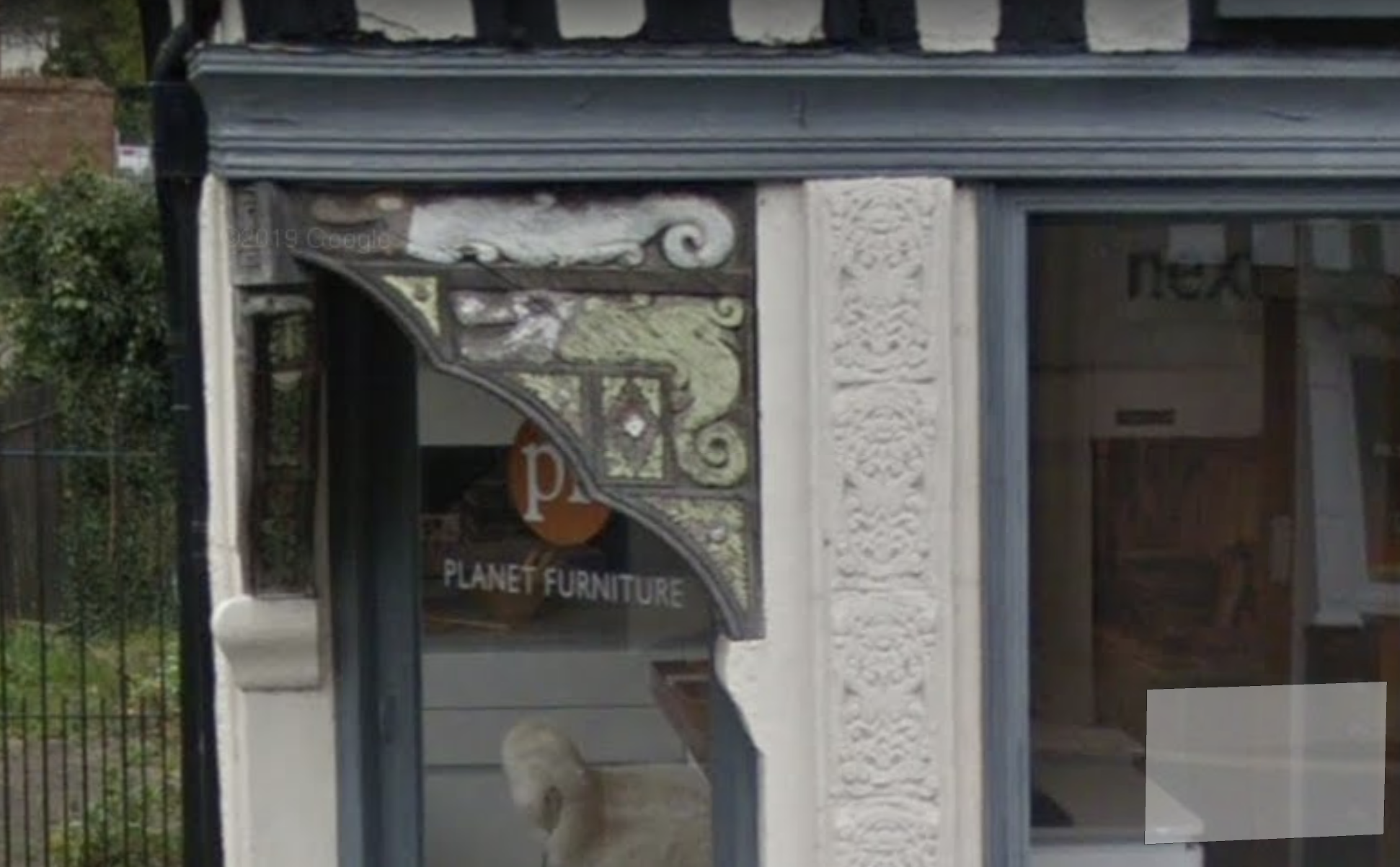
Ceunis’ contribution to the Hitchin streetscape invites comparisons with his fellow Hitchin-based émigré artist, Theodor Kern (1900 – 1969), whose life I’ve also been researching. On my blog about Kern, I wrote recently about the stained glass window that he designed for the door of Perks and Llewellyn’s chemist shop in the High Street, and which is now on permanent display in North Hertfordshire Museum.
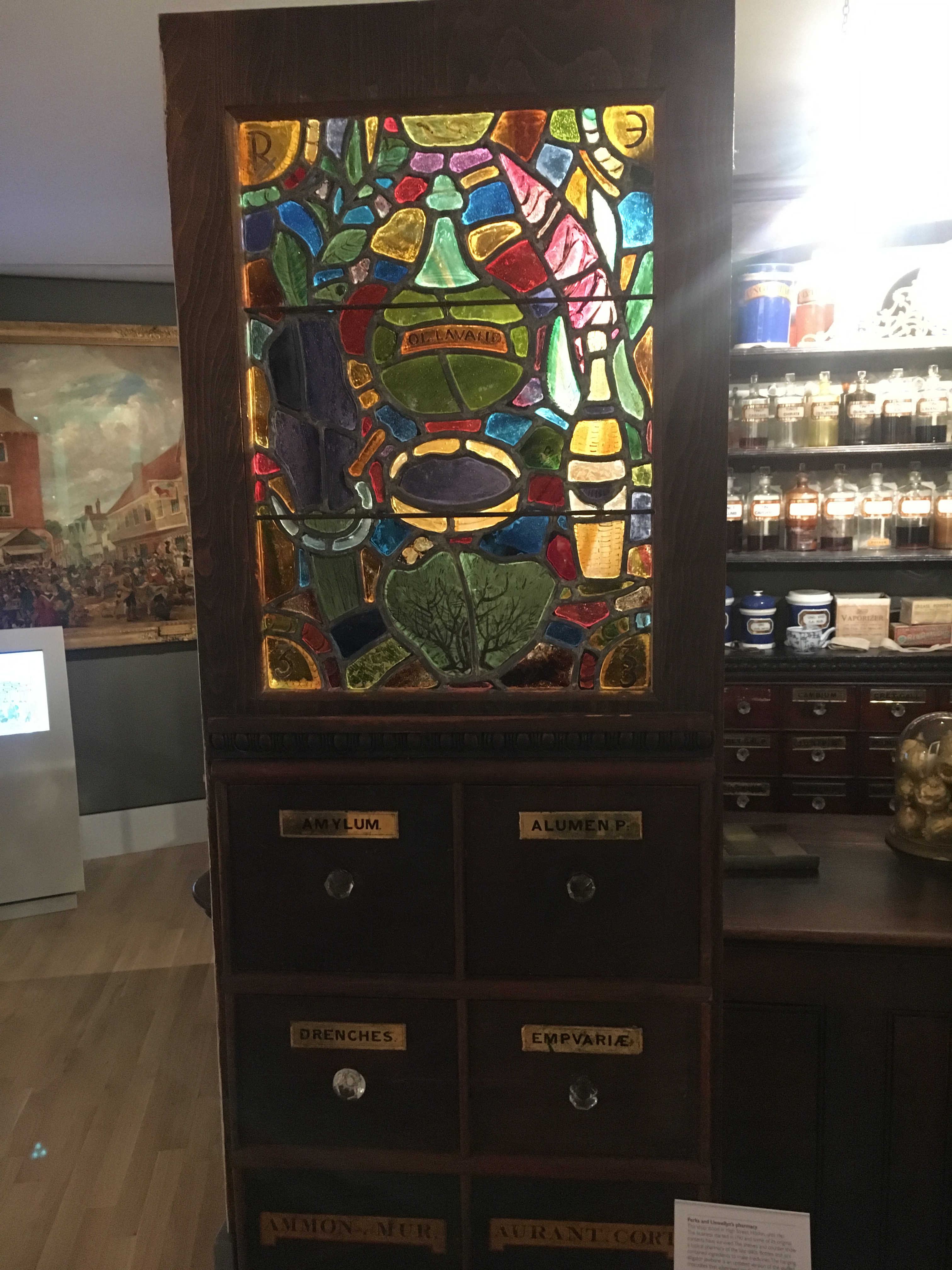
Theodor Kern’s stained glass window for Perks and Llewellyn, on display in North Hertfordshire Museum (author’s photograph)
Of course, the two artists were from different generations – Ceunis was fifteen years older than Kern – and they were refugees from different wars, Ceunis fleeing his native Belgium in 1914 and Kern his home in Vienna in 1938. Ceunis would have created the Bridge Street feature a number of years before Kern arrived in Hitchin. The two men were also very different in temperament, with Kern being devoutly Catholic and Ceunis, at least in his youth, affiliated with a number of radical social movements. However, given that both were relatively well-known artists, both emigrants, both living in the same small market town, and both having some involvement in Hitchin Art Club (Ceunis as competition judge, Kern as tutor and critic), it seems likely that they knew each other. It would be fascinating to discover the nature of their relationship, and what they thought of each other’s work.







